The Soma Experience: Storybooks by and for children
Posted by Shaoni Dasgupta on March 03, 2021Post by Demere Kitunga, Chief Executive Officer, Readership for Learning and Development—Soma
Founded in 2008 in Dar es Salaam, Tanzania, Soma Book Café is a readership promotion space and innovative co-creation hub for literary expression and multimedia storytelling approaches. It provides different arenas for literary expression and discourse; promotes reading for pleasure and encourages independent pursuit of knowledge. Soma, which means read or learn in Kiswahili, is an apt name for an organization that actively encourages both.
Soma believes strongly in the creative ability of children. It runs a Saturday morning programme called Watoto na Vitabu (Kiswahili for children and/with books). In 2019 with assistance from Neil Butcher & Associates, Soma began a pilot project—the Kalamu Ndogo (little scribes) book series to undertake a research and writing process with children on a pilot basis to generate insights and data on early literacy content creation with and for children. Children wrote, illustrated, and selected the stories they liked best.
Three groups of children from different backgrounds took part in the project—a cohort from the Watoto na Vitabu Saturday programme and two classes from after-school centres in Dar es Salaam. The four children whose stories were selected worked with published authors, illustrators, designers, and other book professionals to turn their ideas and words into a professional product in print and online.
All of the children participated in workshops and brainstormed on story-writing and creativity. They were encouraged to share experiences by talking about their lives and to stretch their imaginations. We used all kinds of prompts—children’s books, including comic books; cuttings from magazines; sketches from a fully illustrated children’s book; and a number of objects like a ball, board games, and objects in the natural environment like twigs or leaves.
"We discovered some children were good illustrators and storytellers; others were good observers. The children were improving their skills from one day to the next." - Patrick Joseph Gongwe, HK Learning Centre
We can see how this process inspired the children’s work. Nakiete Mlaki drew her main character after looking at children’s book illustrations. Larry Semiono’s story, The Poor Lady, was partly influenced by a magazine picture of a helicopter. The children also wrote about their lives—feeling different and not belonging, poverty, or dueling co-wives, for example. These are the four prize winners:
-
The Lonely Frog by Nakiete Mlaka about a young frog who feels alienated from her peers, but who possesses an unappreciated gift that will save the community. The story was written in English and translated into Kiswahili.
-
Chungu cha Ajabu in Kiswahili by Farida Chacha* about two friends, a prince and a commoner, who became ensnared in trouble because of the king’s avarice and bad faith. Farida’s story is influenced by traditional African/Arabic folklore.
-
The Poor Lady in English by Larry Semiono about an elderly lady who wants to fly and realizes her dream when a wooden stick turns into a flying wooden tray.
-
Mbuguma na Nasiru in Kiswahili, by Sharifa Shemputa about two half-brothers braving a journey into the jungle to fetch medicinal plants to save their ailing (and argumentative) mothers’ lives.
The author with Nakiete Mlaki, author of The Lonely Frog
The project, which was complicated and ambitious, had its ups and downs. A number of mid-course revisions along the way were necessary. But we were able to accomplish many of our objectives, even with the COVID-19 lockdown in March 2020. We saw that given the right environment, children are as skilled storybook authors as adults are. Kalamu Ndogo was predicated on producing three works in Kiswahili but ended up with four published stories—two in Kiswahili, two in English.
A case study on this project will be found here at the Soma Book Café website and here at the Early Learning Resource Network website.
Three of the stories can be accessed on StoryWeaver and at Soma Book Café. They carry a CC BY 4.0 licence.
Please send us your comments about our work and the stories. We welcome sharing and translation!
Unfortunately, Farida’s mother withdrew permission for her daughter to participate in the project and we have not published Farida’s story. Farida Chacha is not her real name
A peek inside a StoryWeaver workshop in Nadia, West Bengal
Posted by Remya Padmadas on October 01, 2018Earlier this year, StoryWeaver conducted a Bengali Translation Hackathon with a group of enthusiastic teachers and language students. The hackathon saw over 70 level 1 and 2 stories translated to Bengali and reviewed.
The participants were excited by the possibilities the StoryWeaver platform afforded and left the hackathon with many ideas on how they could use it in their work with children.
Participants, Anupam Dam and Suman Das, was particularly excited by StoryWeaver, and wanted to introduce it to students and also to teachers. He wrote back to us soon after the hackathon with the idea of conducting a StoryWeaver workshop for some of the teachers in his school.
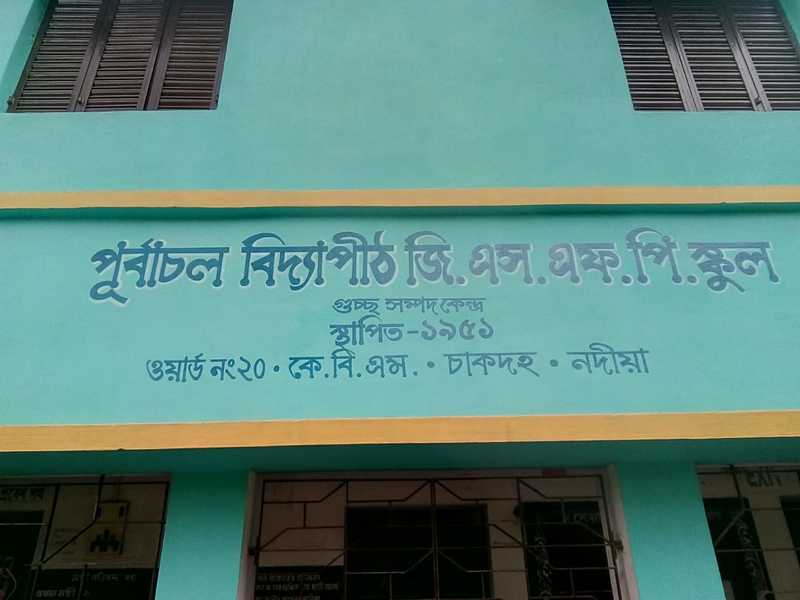
Anupam is a a government aided school teacher and is keen to provide his students with the best possible facilities and resources. Suman Das is a Head Master Of Chalitatali Prathamik Vidyalaya of Nadia District.
“I wanted to arrange the workshop to spread awareness among teachers like me about the vast scope of using StoryWeaver in the classroom” Anupam shared. “All the participants chosen to attend the workshop were equally dedicated towards education.”
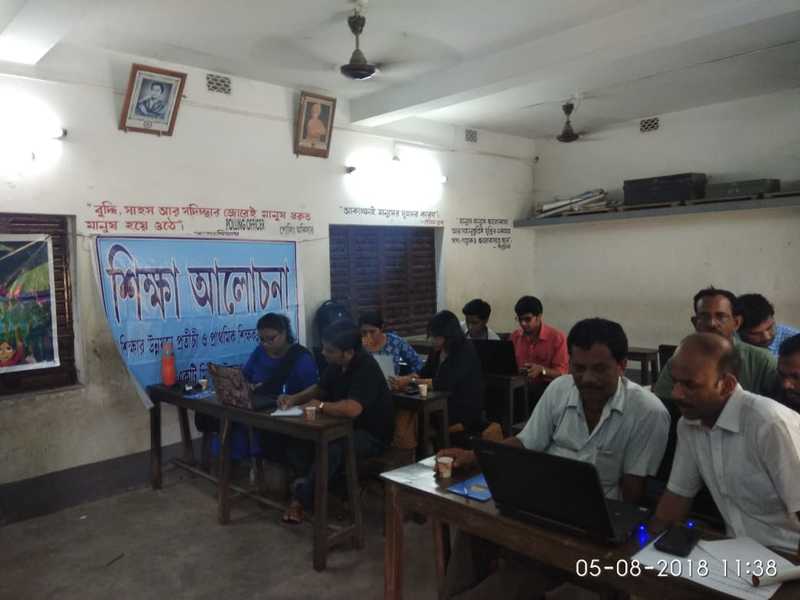
Team StoryWeaver had shared a suggested schedule for the workshop. “This helped the workshop go as planned, from the introduction stage to final publishing of stories.” recalls Suman.
The workshop facilitators were pleased to notice that participants willingly involved themselves in the workshop and performed the tasks asked of them flawlessly. They had very few queries, and the most frequently asked question was "Is it possible to edit already published stories?"
“My colleagues were engaged throughout the workshop and enjoyed it the most when the saw their stories published on the StoryWeaver platform, ” added Suman.
Sudeshna Moitra, our Bengali Consultant Language Editor, was an observer at the workshop and had this to say about the experience: “Yesterday’s workshop was very enriching for me. All the fellow teachers were quick to grasp the concept and participated equally and intelligently. Their enthusiasm to learn and know more made the workshop quite fulfilling. Had a great experience from my side as well. I enjoyed the opportunity to interact with a group of interesting minds and hope to do similar workshops more. It feels great to conduct such workshops and the feedback from them was wonderful. Hope I have managed to contribute something meaningful to them through the workshop.
The workshop ended with teachers discussing ways in which they could use StoryWeaver in the classroom environment and sharing their takeaways from the session. Some of them were happy to have learned a new way to share stories with students and planned to ‘create stories based on school syllabus’ while others were happy to have the opportunity to create and translate stories in their mother tongue.
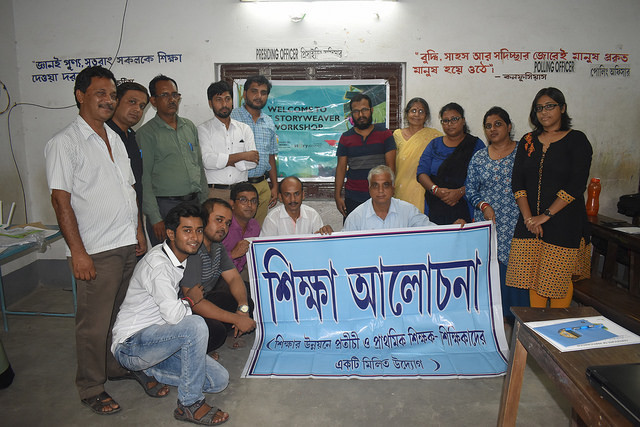
We look forward to seeing more teachers conducting StoryWeaver workshops in their schools. If you’re interested in introducing StoryWeaver to your peers and in your classrooms, write to us at [email protected] today.
StoryWeaver Spotlight: Manohar Notani
Posted by Amna Singh on October 01, 2018Manohar Notani is an engineer by qualification, but over time, realized that engineering was not his cup of tea. He says 'This realization of being a fourth idiot came somewhat late'. He is now happy in the world of words and we are lucky to have his skills as a Hindi translator. His transaltion of MIss Bandicota Bengalensis Digs up the Seashore won the Hindi book of the Year award at FICCI.
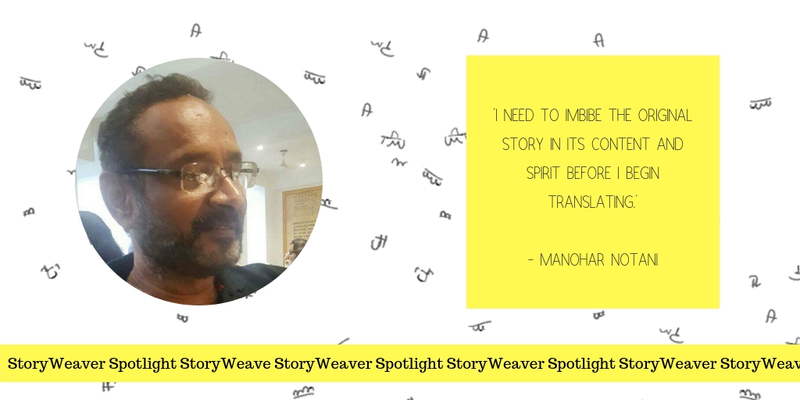
Q: What is your personal relationship to language and translation?
A: It should be, and should sound ‘natural’. I don’t like to treat language as a mere means of communication. Language is an independent entity itself. Hence, my utmost endeavor is to ingest the concept(s), thought(s) presented in the ‘original’ and then present them in ‘my’ language as if they were never alien to it.
Q: When you’ve been given a story to translate, what’s your process, and how long does it generally take?
A: It all depends on the fluidity and cogency of the original. If the given story has a natural spontaneity and mirth in it, that ‘wow’ element will follow easily and naturally in my translation too. Otherwise, I have to have 3-4 reading and re-reading sessions prior to translating it. In short, I need to imbibe the original story in its content and spirit.
Q: What do stories in translation bring to young readers?
A: Pure pleasure, at least, if nothing else.
Q: How did you cultivate the skills needed to translate books for children?
A: Keeping alive and kicking my child within, through perseverance though.
Q: You’ve translated many stories for us. Which has been your favourite to work on?
A: Miss Bandicota Bengalensis Digs Up the Seashore , of course.
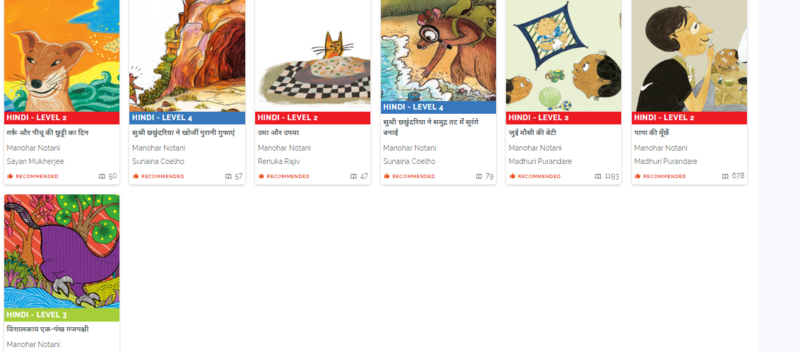
Q: What is the hardest thing about translating from English into Hindi? How do you navigate words or phrases that are tricky to translate?
A: Read, read, and read a lot. One has to have a rich ‘working’ vocabulary. Moreover, I invest a lot in books, dictionaries, subscribing to online dictionaries etc.
Q: Tell us something about how did you go about translating 'Miss Bandicota'? And how do you feel about the outcome?
A: To translate a story of Miss Bandicota’ s caliber, one needs to have the ‘feel’ of its milieu and throw one’s imagination to childlike tantrums.
Q: How do you feel when your story reaches the child?
A: It’s a sheer, yet indefinable pleasure.
Q: How else do you think we can join hands to take more stories to more children in more languages.
A: By having a strong faith in storytelling as a strong device for making our universe a better habitat.
Q: What type of person do you think makes the best translator for children’s stories?
A: One who has a knack for nonsense.
Q: Do you have any advice for anyone interested in becoming a translator?
A: Be a perpetual yet an untiring learner.
Q: A book you'd like to recommend to other translators?
A: The God of Small Things and White Tiger.
Be the first to comment.